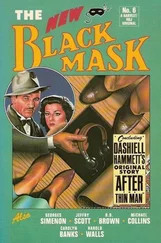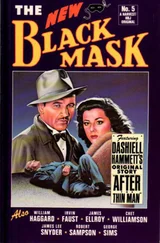So, that is what I wanted to show you in this song.
Now I will give you a few more details about ‘Lied der Waldtaube’, which is probably very familiar to all of you, and rather than conducting any microscopic examination I will draw your attention to a few technical achievements. First of all, regarding the evolution of new compositional methods in Schoenberg, there is a constant interplay, one might say, between the harmonic and contrapuntal aspects. This means that, on the one hand, the harmonic effects result from contrapuntal collusions and, on the other hand, that the contrapuntal complexity stems from the complex construction of the chords, of which I gave you several examples in the previous sessions. Now, the example I will give you this time is an opposing one, for it shows how the voice leading actually brings about new chords, how the logic of the parts simply has consequences for the formation of new chords. The passage I would like to mention is on page 74. – Yes, that’s very regrettable […]. 20So I’ll play it to you in context [plays Gurrelieder , ‘Lied der Waldtaube’]. So you see here how these two groups are approaching each other chromatically […].
[…] Now, this formation of chords in passing, this proves especially in Gurrelieder to be one of the most revolutionary means of harmonic formal crafting, and I think it was fundamental to the emergence of the new harmony. Incidentally, let me also point out one matter in which this forms a good starting point. In the so-called heroic days of new music – and the book on linear counterpoint by Ernst Kurth 21is partly to blame for this – people always said that harmony did not really matter in new music, it was merely a result of the counterpoint. I just gave you an example from which you could see – well, one cannot speak of ‘counterpoint’ here, because it is not really a contrapuntal passage – but how the movement of the inner parts leads to certain new and, by the standards of traditional harmonic theory, unusual events. But it would really be entirely wrong to assume, and it was only the superficiality of the cretins who were spouting their nonsense about these things back then, that these matters of counterpoint or voice leading always have a harmonic sense too. Schoenberg never simply ‘went for it’ like many other later composers, especially in the period of free tonality, who really no longer listened to the harmonic aspect; rather, he was always extremely finely attuned to points of harmonic emphasis, as I just showed you. Listen to this progression [plays]. It is like that with all these things. That is to say, this ear for harmonic detail, for the individual harmonic event, which I already mentioned when we looked at the song ‘Erwartung’, this is always so alert in Schoenberg that every product of Schoenberg’s counterpoint simultaneously has a harmonic sense. In other words, and I would like to say this about the problem of counterpoint in general – I hope I can give a course here some time purely on Schoenberg’s counterpoint, I think that would really be very worthwhile [applause] – the most important thing in counterpoint is actually the harmony – that is, the problem of counterpoint is the creation of a harmonic sense, just as everyone knows from learning harmony that the problem of harmonic writing is good voice leading, leading the voices in such a way that they make harmonic sense. And if we think that one of the decisive aspects of Schoenberg’s counterpoint is a certain binding character, a feeling of necessity, then this quality, which I will discuss further in a moment, is largely due to the fact that he establishes a balance between contrapuntal and harmonic forces, that the results of the counterpoint make harmonic sense, and conversely that the harmonic movements make contrapuntal sense. In other words, if the difference between the two dimensions, the vertical and the horizontal, was eliminated by the twelve-note technique, then this principle that everything harmonic must be contrapuntal and everything contrapuntal must be harmonic is already implicit in the procedure. And that is why I showed you this passage here, and will show you another too, especially from these male choruses in the third part of Gurrelieder , and any fool can hear the parallel with the male choruses from the second act of Götterdämmerung . But this has no bearing, none whatsoever, on understanding what is actually happening there. Although one can even discover Hagen’s motif [plays] hinted at, if one enjoys such things, the musical character is utterly and radically changed.
I would like to show you a few passages now, namely the ending and part of a very bold – no, I will play you the choral excerpt. Unfortunately it is quite impossible to demonstrate the extremely polyphonic parts of these choruses on the piano, even to stammer them, and playing the gramophone record until we reached the corresponding point would be a very time-consuming process. So we will have to dispense with that. I will play you the relatively homophonic ending of these male choruses to show you the harmonic events. I will play from 171 [plays]. And then, pay particular attention to the following passage [plays]. And now, pay attention to what happens here too [plays], and so forth. So you can see here how these highly dissonant chords result from the voice leading, paralleling these preceding, far more harmless endings. Here they follow one another, and then [plays] these two elements are folded together. So here you already have the principle of twelve-note composition, where things that are introduced successively at first, in this case the change from the G major chord to the chord that I will incorrectly term a D flat minor chord, although it is in reality something far more complex – that this change ultimately leads to the chords being both thrown together at once.
Now, I had spoken to you just now of the harmonic origin of polyphony, that is, the root of modern harmony, of Schoenberg’s new harmony, in voice leading. But Schoenberg’s harmony has another root. The question of where this Schoenbergian polyphony actually comes from is an extremely peculiar one. Such elements as those I have just shown you are one dimension of that; there are also entirely different ones. And for that you have to go back to Wagner for a moment. As you all know, there is relatively little in the way of truly polyphonic passages, of true polyphony, in Wagner. And it is very strange that, as late as around 1910, if you read a book like Strauss’s treatise on orchestration, Wagner was considered a great exponent of polyphony 22simply because the inner parts in his music are – in the interests of a meaningful rendition, I would almost say – very prominent, but in Wagner things almost always stay within the framework of the four-part chorale. It is really always four-part chorales, with some of the voices partly elaborated, and true polyphony exists only in a small number of passages where he works with thematic combination, superimposing different leitmotifs. There are a few well-known, very interesting passages of this kind in Die Walküre , and naturally the most famous example of all is the threefold thematic combination from the Meistersinger prelude. Now, this aspect of thematic combination plays an oddly significant part as the origin of both Schoenberg’s polyphony and the new Schoenbergian harmony. And I would like to show you how such thematic combinations already appear in Gurrelieder , but also how these thematic combinations are clearly different from the later, mature polyphony. One finds such a combination in ‘Lied der Waldtaube’, where he combines this theme you will recall [plays], which is the same as this [plays] but with a different ending, with the theme that has those large intervals, which has a different rhythm here [plays]. And now there is also a third that is interwoven with these, namely the theme in the voice, but it runs partly – and this is no longer the case in late Schoenberg – in unison with the wide-interval theme, though it does not maintain the unison entirely strictly. So, I will play you this passage [plays]. And here you have the ‘wood pigeon’ harmony again [plays], and so forth. Now, I wanted to tell you something about the problem of the binding and the non-binding. Look here: the counterpoint in this passage has something non-binding, in the sense that none of the combined voices are really set apart from the others [plays], and now they go together [plays]. This would be quite unthinkable in late Schoenberg, of course. That is, in late Schoenberg, either the voices would be identical or move in parallel, or they would be highly contrasting. So this is one of those non-binding aspects connected to this tonal style. How one is supposed to envisage the concept of the contrapuntally binding, what it actually is, that is indeed one of the most difficult questions. Schoenberg himself once said that he only really learnt what counterpoint is when he wrote the Woodwind Quintet. 23And I am convinced that he was quite serious about that, in a certain sense. For true counterpoint as found in mature Schoenberg does not mean putting several voices together, superimposing them and combining them as seamlessly as possible; true counterpoint means that the relationship between several simultaneous voices is organized in such a way that the one is conditioned by the other, and vice versa, and that there is no arbitrary relationship, no arbitrariness in the relationships between simultaneous voices. And I would say that this aspect, the fact that there can no longer be any chance connections between simultaneous voices, that these simultaneous voices must rather be utterly co-dependent, that this is really the central rule of musical development in late Schoenberg. The greatest area of interest in late Schoenberg is this absolute necessity of counterpoint, but necessity in the sense that the mutually complementary voices together form a unity of sense, and not simply that they are superficially adapted to one another in keeping with some rules or other. I think that we still lack a truly exact concept of new counterpoint to this day, and that the didactic notion of combined simultaneous voices and the genuinely artistic idea of this necessity of interrelated voices, that no distinction is made between the two, and it would be vital to articulate these aspects. And I can only touch on this problem, as indeed, in this course, in such a short course, I can only really touch on problems and direct your attention towards a number of questions; but the real work is for you to do, namely to absorb what I have said and, if it means something to you, to develop it further yourselves. I can only try to give you an idea of how to look at such things in order to understand what is going on within them. But I can by no means claim to give you a complete explanation of these works and all they have to offer, for I can really provide you only with those elements that I believe are necessary to understand them. I think this qualification of the purpose of my undertaking here is a necessary one.
Читать дальше












